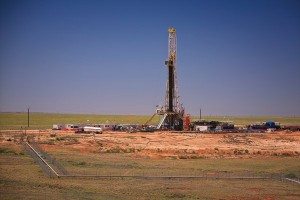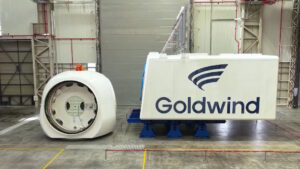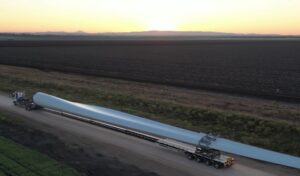Researchers at the United States’ Department of Energy’s National Renewable Energy Laboratory (NREL) have demonstrated a new material for the construction of wind turbine blades that can be recycled and could end up transforming the wind energy industry.
NREL researchers, in partnership the American division of French specialty chemicals and advanced materials company Arkema, have demonstrated the feasibility of thermoplastic resin in a new article in the journal Renewable Energy, validating its structural integrity on a thermoplastic composite blade manufactured at NREL.
Wind turbine blades are currently manufactured using thermoset resin, a more energy- and manpower-intensive material with very little recyclability, often ending up in landfills.
According to the researchers, however, writing in new paper titled, “Structural Comparison of a Thermoplastic Composite Wind Turbine Blade and a Thermoset Composite Wind Turbine Blade,” switching to thermoplastic resin would not only make wind turbine blades more recyclable, but would also enable the construction of longer and lighter blades at a lower cost.
“With thermoset resin systems, it’s almost like when you fry an egg. You can’t reverse that,” said Derek Berry, a senior engineer at NREL and co-author of the study.
“But with a thermoplastic resin system, you can make a blade out of it. You heat it to a certain temperature, and it melts back down. You can get the liquid resin back and reuse that.”
NREL has also developed a technoeconomic model to explore the cost benefits of using a thermoplastic resin in wind turbine blades.
Traditionally, wind turbine blades are made primarily of composite materials such as fibreglass infused with a thermoset resin. Using an epoxy thermoset resin in the manufacturing process requires additional heat to cure the resin, which translates into increased costs and manufacturing time.
Thermoplastic resin, however, cures at room temperature and does not require as much labour, which according to NREL’s figures accounts for approximately 40% of the cost of a wind turbine blade. The new process could therefore make blades approximately 5% cheaper to make.
Utilising thermoplastic resin could also allow manufacturers to build wind turbine blades on site, which could be a massive gamechanger for the industry, as wind turbine blades get longer and larger, thus making transport a growing concern.
Thermoplastic resin-based blades are also more efficient and robust. “The thermoplastic material absorbs more energy from loads on the blades due to the wind, which can reduce the wear and tear from these loads to the rest of the turbine system, which is a good thing,” explained Robynne Murray, one of the study’s NREL co-authors.
NREL’s work with Arkema on comes less than two months after it was announced that Arkema was one of several French companies involved in the ZEBRA project (Zero wastE Blade ReseArch), a cross-sector project to design and manufacture the wind industry’s first 100% recyclable wind turbine blade.
Driven by French research centre IRT Jules Verne and partnering with Arkema, CANOE, ENGIE, LM Wind Power, Owens Corning, and SUEZ, the ZEBRA project was announced in late-September as a 42-month-long research project with a budget of €18.5 million (A$30.6 million).
“Demonstrating a circular approach to wind turbine blades throughout their lifetime requires mobilizing a strategic consortium covering the whole value chain to guarantee valuable and precise industrial data and achievements,” said ZEBRA project manager, Céline Largeau.
“The ZEBRA project is a great opportunity to join together Arkema, CANOE, ENGIE, LM Wind Power, Owens Corning and Suez who are key leaders in the wind energy sector. We look forward to carrying out constructive work altogether to improve wind energy performance and efficiency.”










